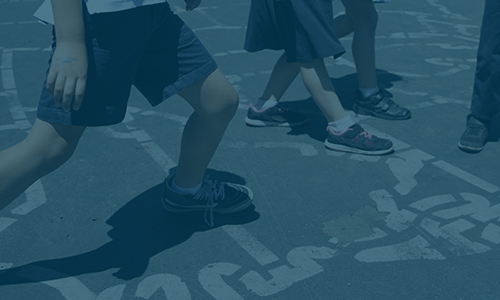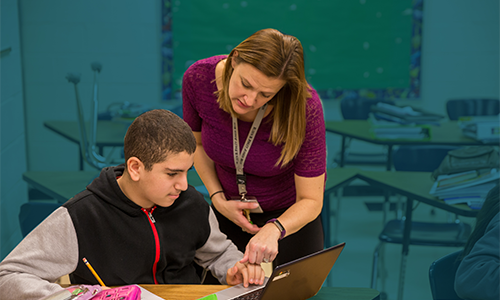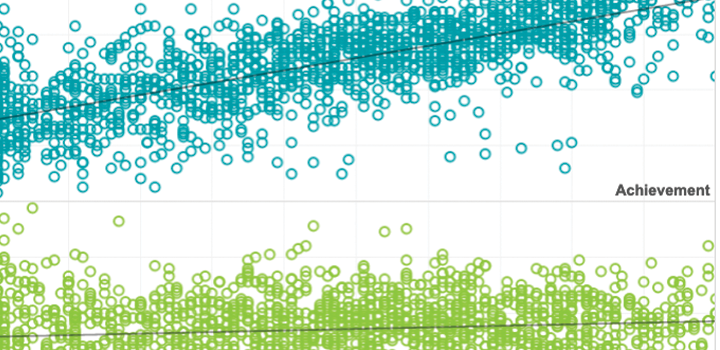Research brief
High dosage tutoring for academically at-risk students
January 2024
By: Ayesha K. Hashim, Miles Davison, Sofia Postell, Jazmin Isaacs

Description
The share of at-risk students has increased post pandemic requiring a response that matches the magnitude of the impact. High dosage tutoring has been one strategy to address the needs. If implemented effectively and at the proper scale, accelerated academic growth is possible.
This brief reviews the collection of research on high dosage tutoring, its benefits and the factors that must be considered and included to implement high dosage tutoring effectively. Among those are frequency and scheduling, group size, qualified personnel, measurement of outcomes, curriculum, tutor-to-student relationships, and new components like removing barriers to access.
See MoreTopics: COVID-19 & schools, Equity, Growth, Informing instruction
Related Topics


NWEA research report examining the impacts of the pandemic’s disruptions to learning and the status of academic recovery. This report features data from the 2023-24 academic year and underscores that unfinished learning continues to be a challenge due to lower achievement gains compared to pre-pandemic trends. This report is part of series tracking the on-going impacts.
By: Karyn Lewis, Megan Kuhfeld
Products: MAP Growth
Topics: COVID-19 & schools, Equity, Growth


NWEA research report examining the impacts of the pandemic’s disruptions to learning and the status of academic recovery. This report features data from the 2023-24 academic year and underscores that unfinished learning continues to be a challenge due to lower achievement gains compared to pre-pandemic trends. This report is part of series tracking the on-going impacts.
By: Karyn Lewis, Megan Kuhfeld
Products: MAP Growth
Topics: COVID-19 & schools, Equity, Growth


Effective summer programs: Practical guidance for district leaders
This report dives into the research on summer programs, their implementation and design, as well as the efficacy of those programs for literacy, math, and social-emotional learning (SEL) outcomes. It also provides recommendations for district leaders to use as a framework for planning and implementing effective summer programming.
By: Miles Davison, Ayesha K. Hashim, Jazmin Isaacs, Susan Kowalski, Karyn Lewis, Sofia Postell, Michael Gaddis, PhD
Topics: COVID-19 & schools, Growth, Guidance, Seasonal learning patterns & summer loss


Typical learning for whom? Guidelines for selecting benchmarks to calculate months of learning
To describe the impact of the COVID-19 pandemic on students, researchers have translated test scores into months of learning to claim how many months/years students are behind in school. Despite its perceived accessibility, there are major downsides to this translation. To inform future uses by researchers and media, we discuss in this brief how to calculate this metric as well as its trade-offs.
By: Megan Kuhfeld, Melissa Diliberti, Andrew McEachin, Jon Schweig, Louis T. Mariano
Topics: COVID-19 & schools, Equity, Growth, Growth modeling, Seasonal learning patterns & summer loss


Exploring the educational impacts of COVID-19
This visualization was developed to provide state-level insights into how students performed on MAP Growth in the 2020–2021 school year. Assessments are one indicator, among many, of the student impact from COVID-19. Our goal with this tool is to create visible data that informs academic recovery efforts that will be necessary in the 2022 school year and beyond.
By: Greg King
Topics: COVID-19 & schools, Innovations in reporting & assessment


Education’s long COVID: 2022–23 achievement data reveal stalled progress toward pandemic recovery
New research shows progress toward academic recovery stalled in 2022-23. This research brief covers data from 6.7 million US students examining academic gains relative to pre-pandemic years as well as tracking the gap in achievement between COVID year student groups compared to their pre-pandemic peers.
By: Karyn Lewis, Megan Kuhfeld
Products: MAP Growth
Topics: COVID-19 & schools, Equity


Technical appendix: 2022-23 achievement data reveal stalled progress toward pandemic recovery
The purpose of this technical appendix is to share more detailed results and describe the sample and methods used in the research in Education’s long COVID: 2022-23 achievement data reveal stalled progress toward pandemic recovery report.
By: Jazmin Isaacs, Megan Kuhfeld, Karyn Lewis
Topics: COVID-19 & schools, Equity


